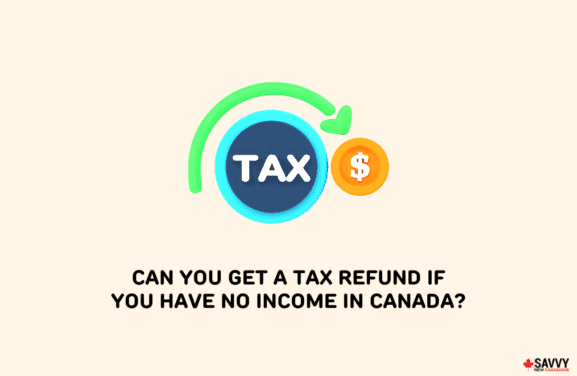Did you know that almost one out of 10 households in Canada reported facing evictions at certain points in their lives? Even though landlords have the legal right to evict tenants, they still need to adhere to regulations in the Residential Tenancies Act (RTA).
If you’re a landlord who wants to evict a tenant, you must have a valid reason before you can file an eviction notice. These include not paying rent, late payments, property damage, and personal use by the landlord.
But what usually leads up to an eviction? This article will explore the various situations that result in landlords legally removing tenants from their rented homes.
Key Takeaways
- A landlord can legally evict a tenant due to non-payment of rent, late payments, damage to property, and if the landlord wants to use the property for personal reasons.
- To lawfully evict a tenant, the landlord must provide a written notice, apply for an eviction order at the LTB, attend hearings, and obtain an eviction order.
- The quickest way to evict a tenant is through a method called cash-for-keys, in which a landlord buys out the tenant’s lease.
What It Means to Evict a Tenant
Evicting a tenant means using legal methods to force a tenant to leave a rented property, following the legal procedures outlined in the RTA. An eviction is a formal procedure that involves:
- Providing a written eviction notice;
- Attending hearings at the Landlord and Tenant Board (LTB); and,
- Obtaining an eviction order from the court to vacate the rented property.
Eviction typically starts with the landlord serving the tenant a Notice to End Tenancy that explains the circumstances leading to the filing of the notice. The landlord then applies to the LTB for an eviction order. If the application is valid, the court schedules a hearing.
Reasons to Evict a Tenant
Here are a few circumstances that lead landlords to initiate an eviction process:
- Frequently late payments of rent
- Not paying the rent
- Damage to property
- Disturbing the landlord or other tenants
- Overcrowding in the unit
- Violating the terms of a lease
- Breaching of the rental contract
- The tenant signs the N11 form (Agreement to End the Tenancy) with the landlord but changes their mind and refuses to move out
- Personal use by the landlord
- Personal use by the new owner (if the landlord sold the property)
- Illegal activity
- Major repairs or renovations
- Demolition of the building or unit
Here is the list of forms landlords and tenants can use when ending a tenancy.
When a Landlord Can Evict a Tenant in Ontario
A landlord needs a good reason to remove a tenant and cannot just kick them out when they feel like it. There’s a process they have to go through and RTA regulations to adhere to. They must formally notify the tenant, apply for an eviction order at the LTB, and attend hearings.
If everything checks out, the court issues an eviction order that the tenant must obey within the specified period. Also, a landlord can legally evict a tenant in Ontario anytime, including during the winter months. The LTB, however, may extend the end date to show consideration.
How Long It Takes to Evict a Tenant in Ontario
Once the court issues an eviction notice, it can take anywhere from 85-138 days to evict the tenant, according to a full service law firm based in Kingston, Ontario.
If the Sheriff’s office has to be involved to remove the tenant forcefully, the process can drag on for up to 168 days.
How to Evict a Tenant Immediately in Ontario
Cash-for-keys, or the practice of buying a tenant out of their lease, is the quickest way for a landlord to get a tenant to leave the rented property.
It’s a pretty straightforward deal, where the tenant signs a consent form drafted by a lawyer and fills out an N11 form. The landlord then hands over some cash to help cover the costs of moving out and looking for a new place.
Depending on the situation, cash-for-keys deals can range from $2,000 up to $30,000. Some arrangements cover up to six months’ rent.
How to Evict a Tenant in Ontario With No Lease
Even with no formal lease, a landlord must give the tenant proper notice before evicting them. It has to meet all legal requirements, which vary by province, to make the process legit.
There are at least two types of tenancy without a formal lease. One is the month-to-month tenancy, also called tenancy-at-will. The other is the holdover tenancy, which is when a tenant sticks around even after the lease has expired.
How to Evict a Family Member in Ontario
Evicting a family member isn’t all that different from evicting regular tenants. But as much as possible, mediation or negotiation should be the first step to resolve the issue peacefully.
If they can’t work things out through negotiation, the next best option is to attend hearings at the LTB. This way, both parties can present their case and find common ground with the court’s help.
These Are Your Rights as a Tenant
In Ontario, tenants have the right to:
- Reside in a safe and habitable living environment
- Privacy
- Be free from discrimination
- A fair rent increase
- Request maintenance and repairs
- Be notified before entry by the landlord
- Dispute deductions from their deposit
- Challenge eviction notices
Visit Tribunals Ontario for the complete list of tenant rights and responsibilities.
How to Stop an Eviction Order in Ontario
If you’re facing an eviction order, there are some things you can do to try and stop getting evicted:
- Talk to a lawyer about the best course of action to take.
- Negotiate with your landlord and work out a deal that suits you both.
- If you’re behind on your rent, apply for programs like rent arrears assistance to help you catch up.
- Show up for all the eviction hearings to explain your side.
- Request a review or file an appeal.
- If you think there are errors in the eviction process, ask for a stay of eviction.
FAQs
How much notice do you need to evict someone in Ontario?
The landlord must give at least 60 days written notice if you’re at least on a month-to-month lease. If you pay weekly rent, the landlord must give a minimum of 28 days’ written notice.
What is an N11 agreement to end a tenancy in Ontario?
The N11 is a mutual agreement between a landlord and a tenant stating they have agreed to end the lease. The agreement typically includes the name and the signatures of the landlord and the tenant, the address of the rental property, and the date the lease will end (often the date most convenient for both parties).
What is the difference between N9 and N11?
N9 is the Tenant’s Notice to End the Tenancy form, which is a legal document that a tenant submits to the landlord to terminate their tenancy in Ontario. The N11, or the Agreement to End the Tenancy, is a form stating that both the tenant and the landlord agree to end the lease.
Can a landlord evict a tenant to sell the property in Ontario?
A landlord cannot evict a tenant for the primary purpose of selling the property. Also, under the Ontario Landlord and Tenant Act, a landlord cannot evict a tenant who is in a lease or on a month-to-month tenancy.
Related:



